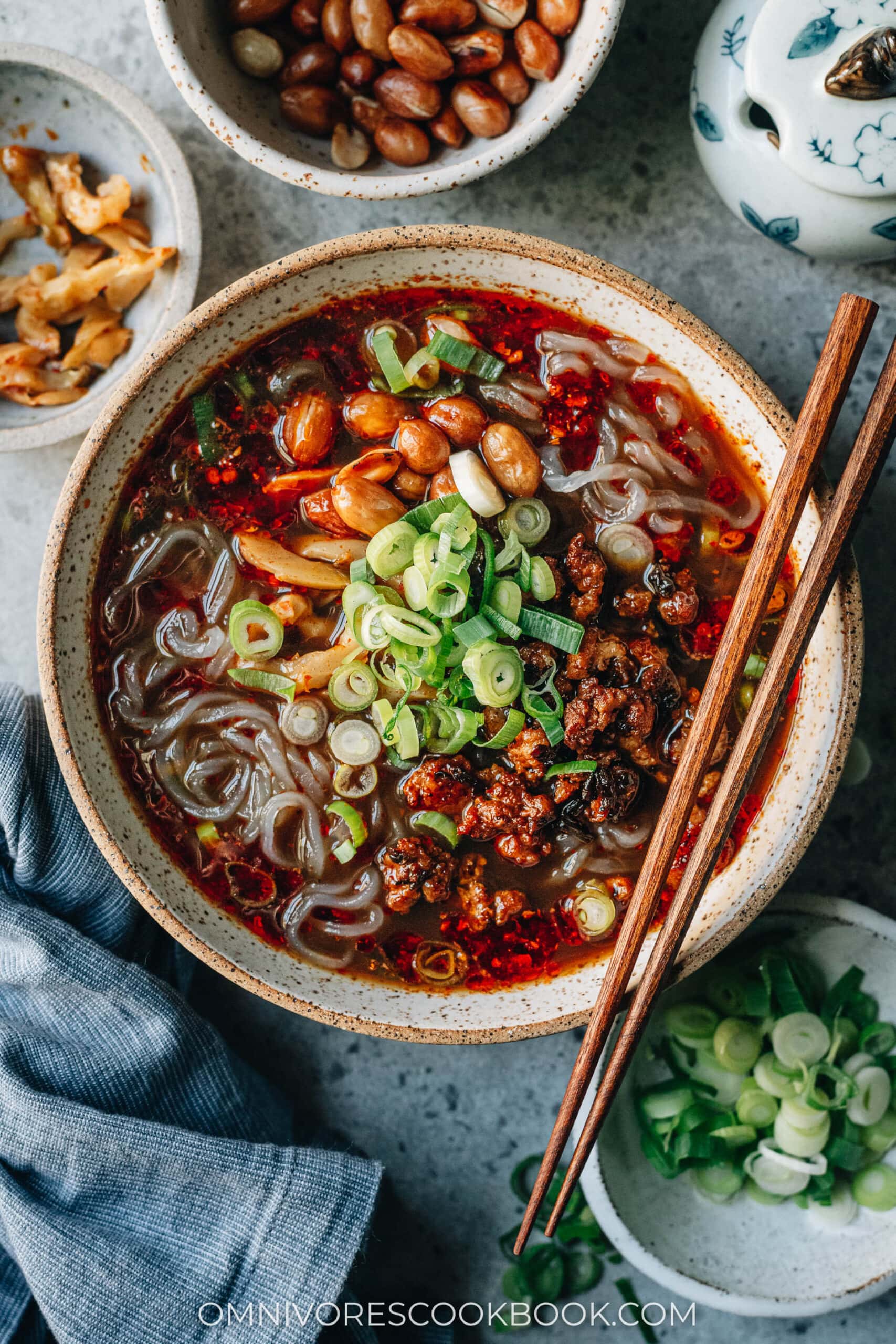
A bowl of suan la fen brings back one of my favorite childhood memories. It was one of my favorite lunch options when I was in middle school. Back then, my parents rarely let me carry any cash, and I usually ate the school cafeteria lunch. Whenever I had saved up some pocket money, my friends and I would go to the street stalls that sold Sichuan food and order a hot bowl of suan la fen.
What is suan la fen
Suan La Fen (酸辣粉), or hot and sour noodle soup, is a signature Sichuan dish that is wildly popular in China and a bit less known overseas. It often uses thick potato or sweet potato noodles, served in a super spicy savory broth with a small amount of ground pork, pickles and crispy fried soy beans for toppings.
Back in our school days, the street vendors were very generous with their chili oil. So we often used the dish as a dare to see who could drink more soup without coughing their eyes out.
Jokes aside, I’ve always had the fondest memories of suan la fen, not only because it brings back laughs and memories, but also because it is addictively tasty.
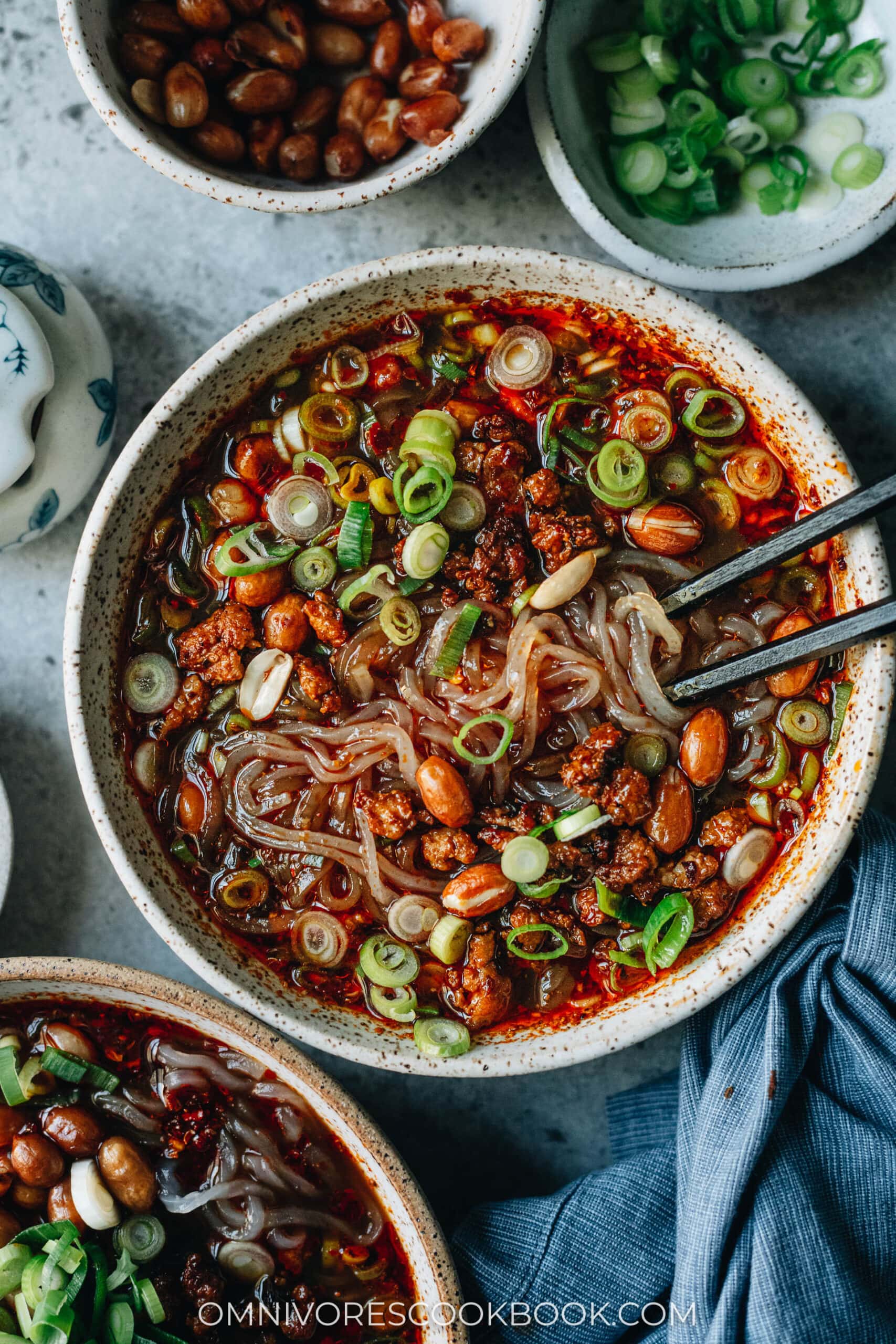
Ingredients
The noodles for suan la fen
Back in China, we always used freshly made sweet potato noodles for this dish. Once cooked, the noodles have a round and fat shape and a tender, almost gooey texture that is super fun to eat.
I have not been able to find fresh sweet potato noodles in the US, but recently I was surprised to see fresh potato noodles at H Mart that are specially designed for suan la fen (see the picture below on the right). They are labeled as “Fresh Sichuan Spicy Vermicelli”, produced by the Havista brand in the refrigerated section, along with other Chinese noodles. It even comes with some broth ingredient packages that actually taste decent, although I prefer the flavor of my homemade one below 🙂
If fresh noodles are hard to find, you can use dried potato noodles or dried sweet potato noodles. Both can be found in many Asian grocery stores under Japanese or Korean names (you might need to check the ingredient list if you cannot read the package language). I tried out the Japanese dried potato noodles (picture below on the left), and they tasted just as great. The next best option is the dried sweet potato noodles used for Japchae, but I’ve found that the dried potato noodles have the closest texture to the authentic suan la fen.
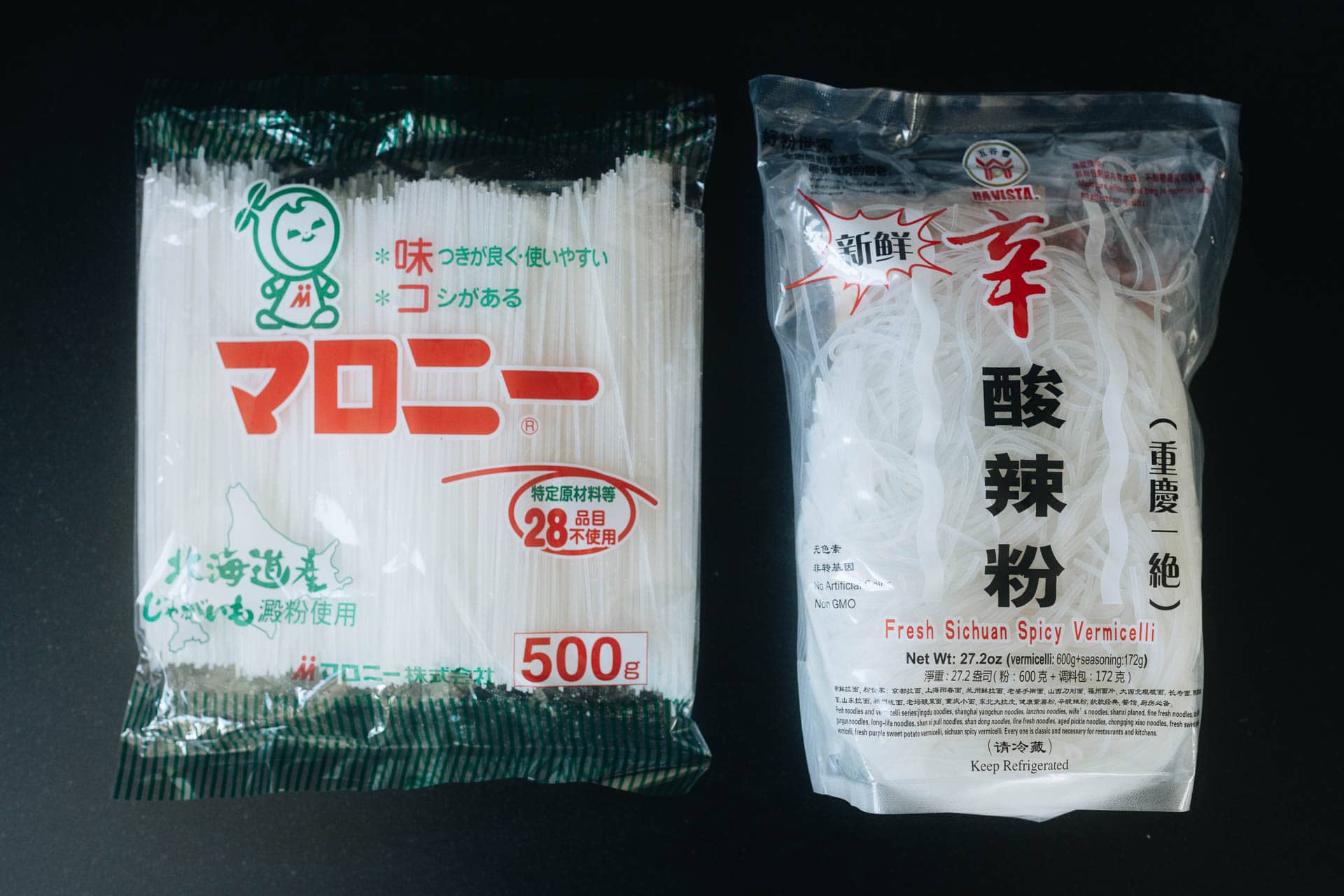
The broth base
Creating a great suan la fen base is very easy. The most important thing you need is a high quality chili oil. I always recommended homemade chili oil in the past because it’s the freshest and it’s very easy to make. However, recently there has been a boom of artisanal chili oils in the US and you can easily find a freshly made one like this that’s high in quality.
The rest of the main ingredients are Chinkiang vinegar and soy sauce. As long as you follow the ratio below, you will get a very balanced tasting hot and sour soup base in your own kitchen.
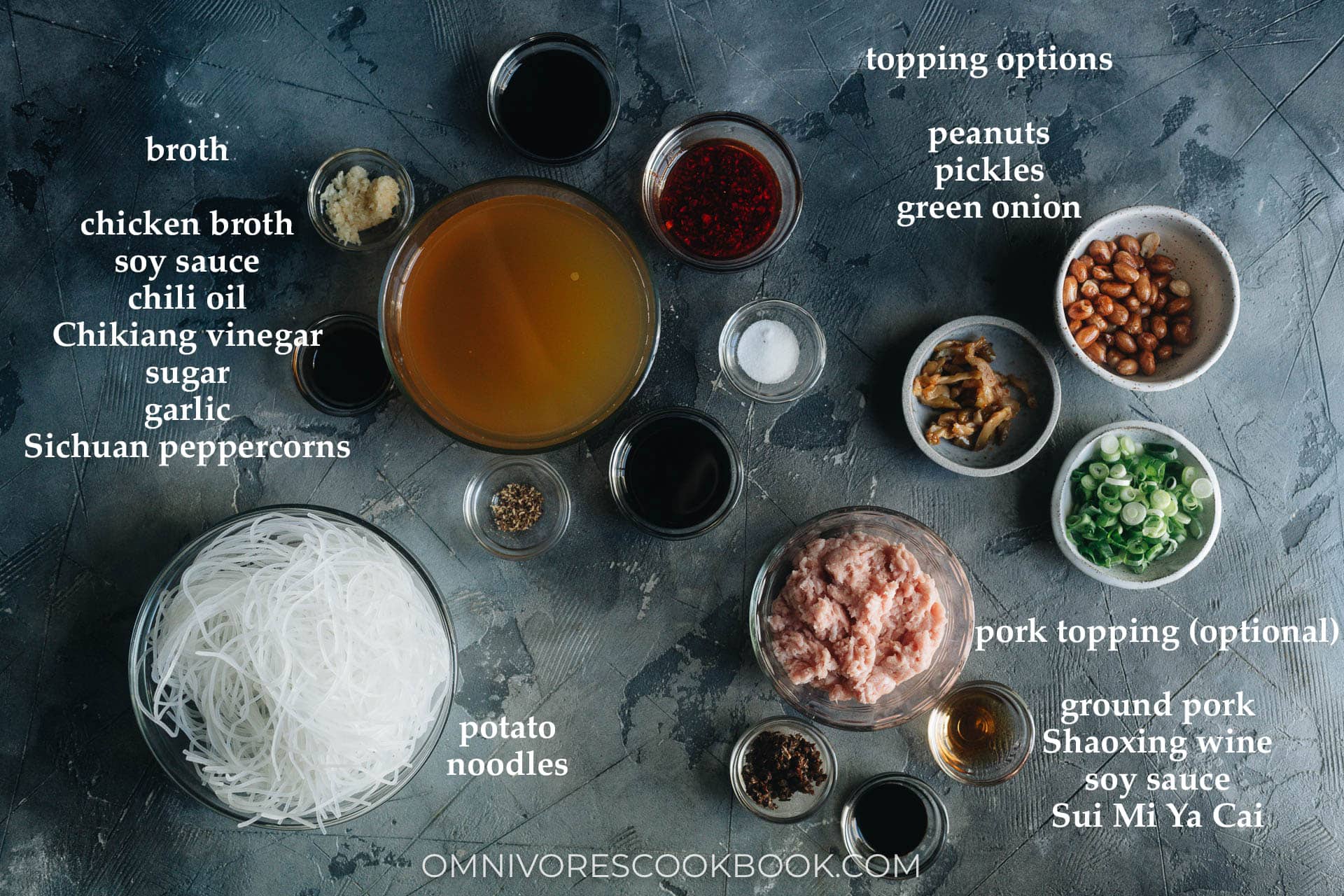
Suan la fen toppings
Suan La Fen is a popular street food in many regions of China, and each of them might have slight tweaks in their own signature style. The most traditional set of toppings includes a very small amount of fried ground pork to boost the taste, some crunchy crispy fried soy beans for texture, and a few slices of pickle for an extra kick of flavor.
Truth to be told, the broth base is so addictively good and the noodle texture very fun to eat, I always feel like all the toppings are optional. But I decided to include some of my favorite toppings to recreate the suan la fen I ate growing up.
The ground pork topping is super easy to put together and it’s definitely optional. But I do like how it enhances the flavor of the noodles.
I replaced the traditional fried soy bean topping with toasted peanuts because they’re more readily available and do not require additional cooking. For the soybeans, you would need to pre-soak and fry them – a bit too much trouble in my opinion.
The pickle topping is also optional. Since the suan la fen broth is so intense, you don’t really need to add extra saltiness to it. But I do like the crispy texture of it. Feel free to replace it with a small head of blanched baby bok choy for added texture and color.
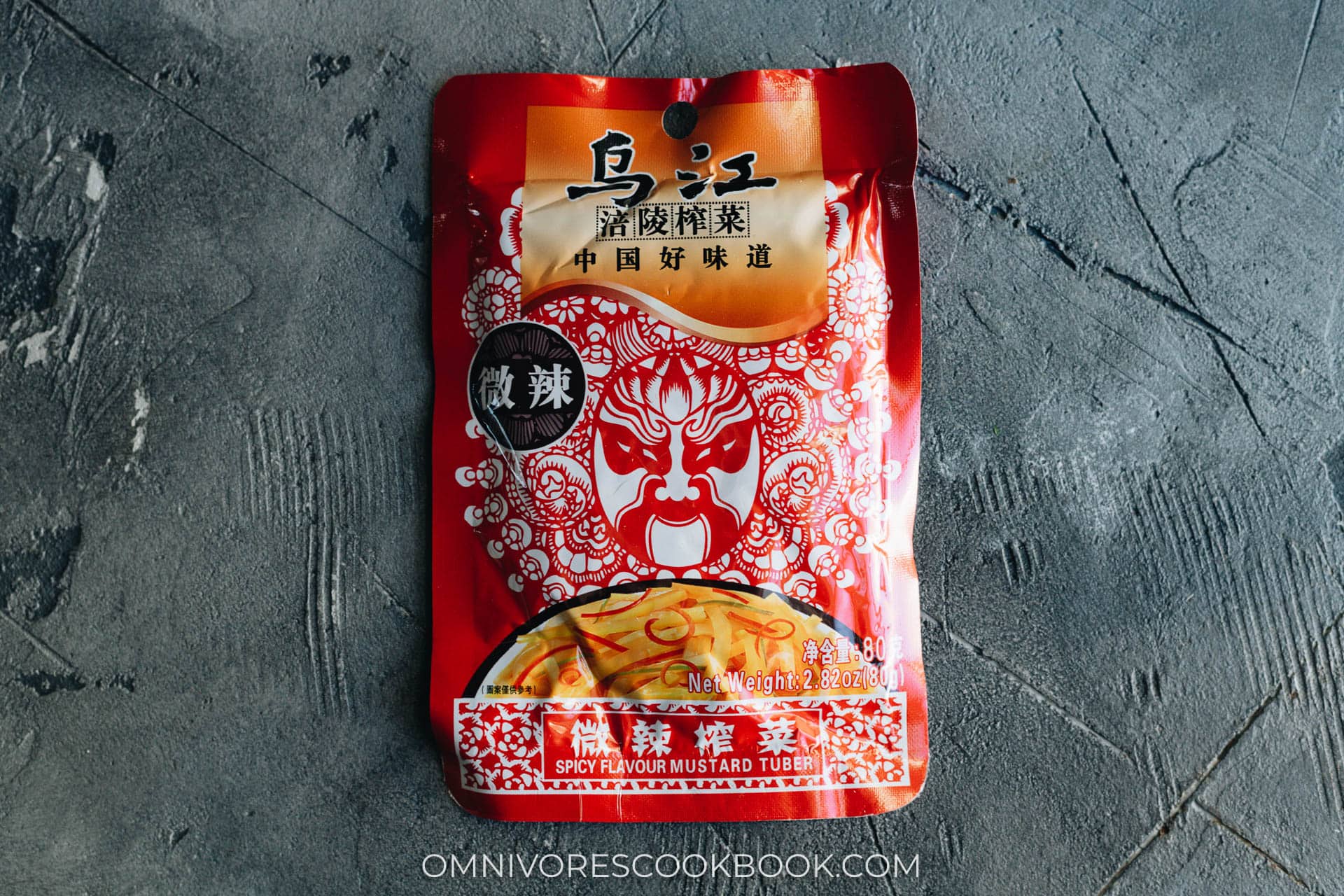
How to make suan la fen vegetarian / vegan
It’s totally possible to make suan la fen vegetarian or vegan. Instead of chicken broth, you can simply use boiling water plus a plant-based bouillon. My personal favorites are Lee Kum Kee mushroom powder and Better than Bouillon Mushroom Base. Both are very savory and less sweet than most Western-style vegetable broth / bouillons. If you prefer to use a vegetable broth, try to find one that is more savory and less sweet (usually the ones made with a lot of carrots are too sweet for this dish). A mushroom broth will work great here.
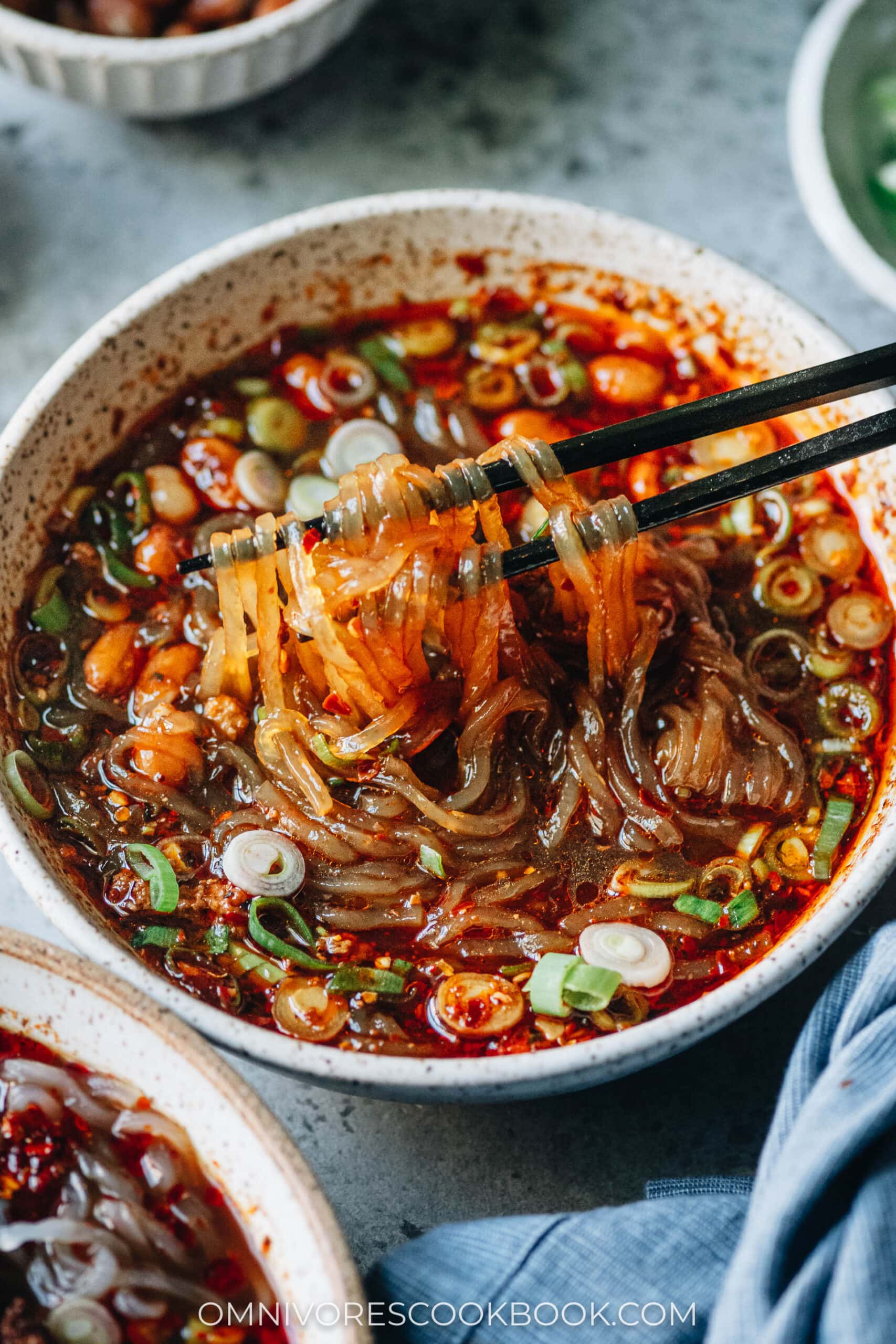
How to cook suan la fen
Cooking suan la fen is super easy, but you do need to figure out a good logistical plan to keep everything hot.
- Add all the broth ingredients into serving bowls
- Brown the ground pork
- Add the seasonings and cook until the pork is crispy
- Heat up the chicken broth until boiling, then turn to low heat to keep warm. Cook the noodles in a separate pot during the same time.
- When everything is ready, pour the hot broth into the bowls with the broth ingredients, then add the noodles
- Garnish with the other toppings and serve!
Serving Tip: Freshly made suan la fen is quite spicy, especially when the broth is hot. Be careful when you slurp the noodles because the chili oil will float on the top and may catch you by surprise. If it tastes too spicy for you, simply wait for the broth to cool down a bit and it will be much easier to handle. Also note, since the broth of the suan la fen is quite rich and intense, I usually fish out all the noodles and rarely drink all the broth. Feel free to make more (double) the noodles and add more of them to the broth if you prefer.
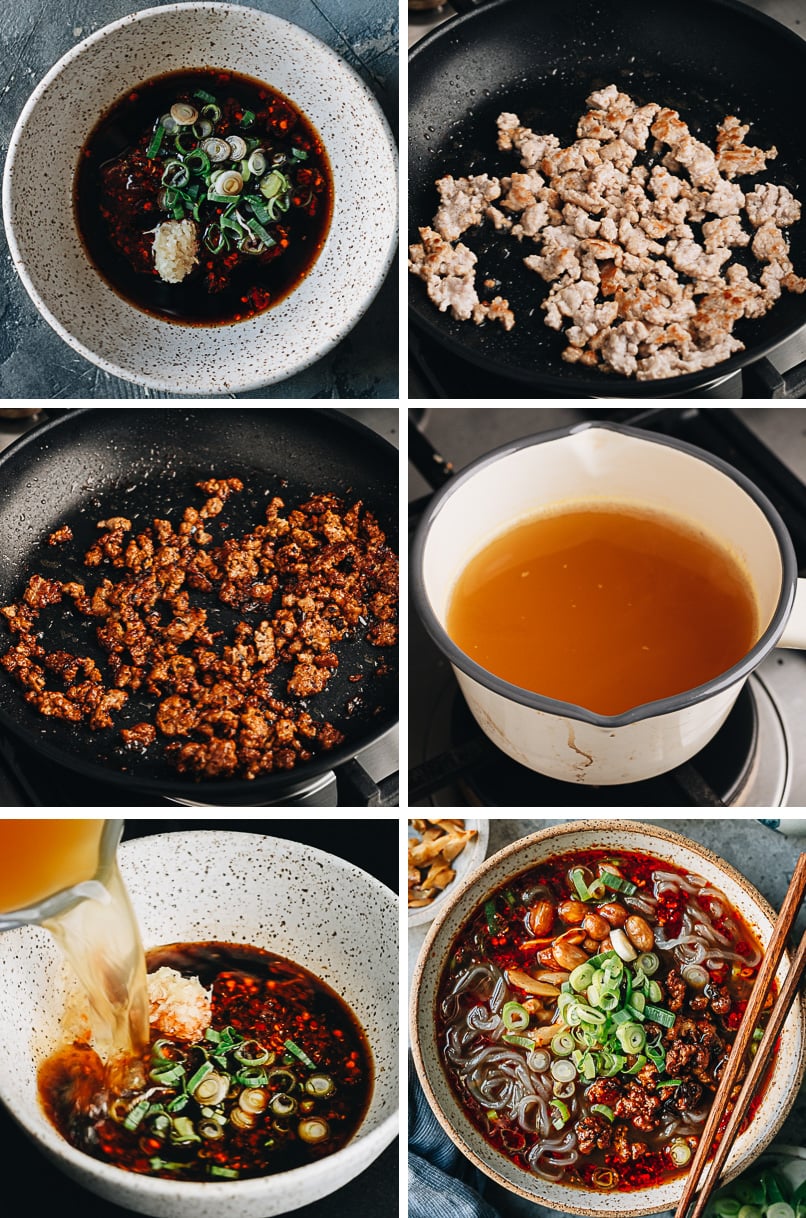
Afterthoughts
Because Suan La Fen is a very rich and intense dish, it’s usually served in smaller bowls as an appetizer, a snack during the day, or a light meal. But for me, I can easily finish up two servings in no time.
If you like noodles and spicy food, you cannot miss this one! Maybe it’s less famous than Dan Dan Noodles, or Cumin Lamb Noodles these days, but it definitely deserves a spot on your Chinese dinner rotation.
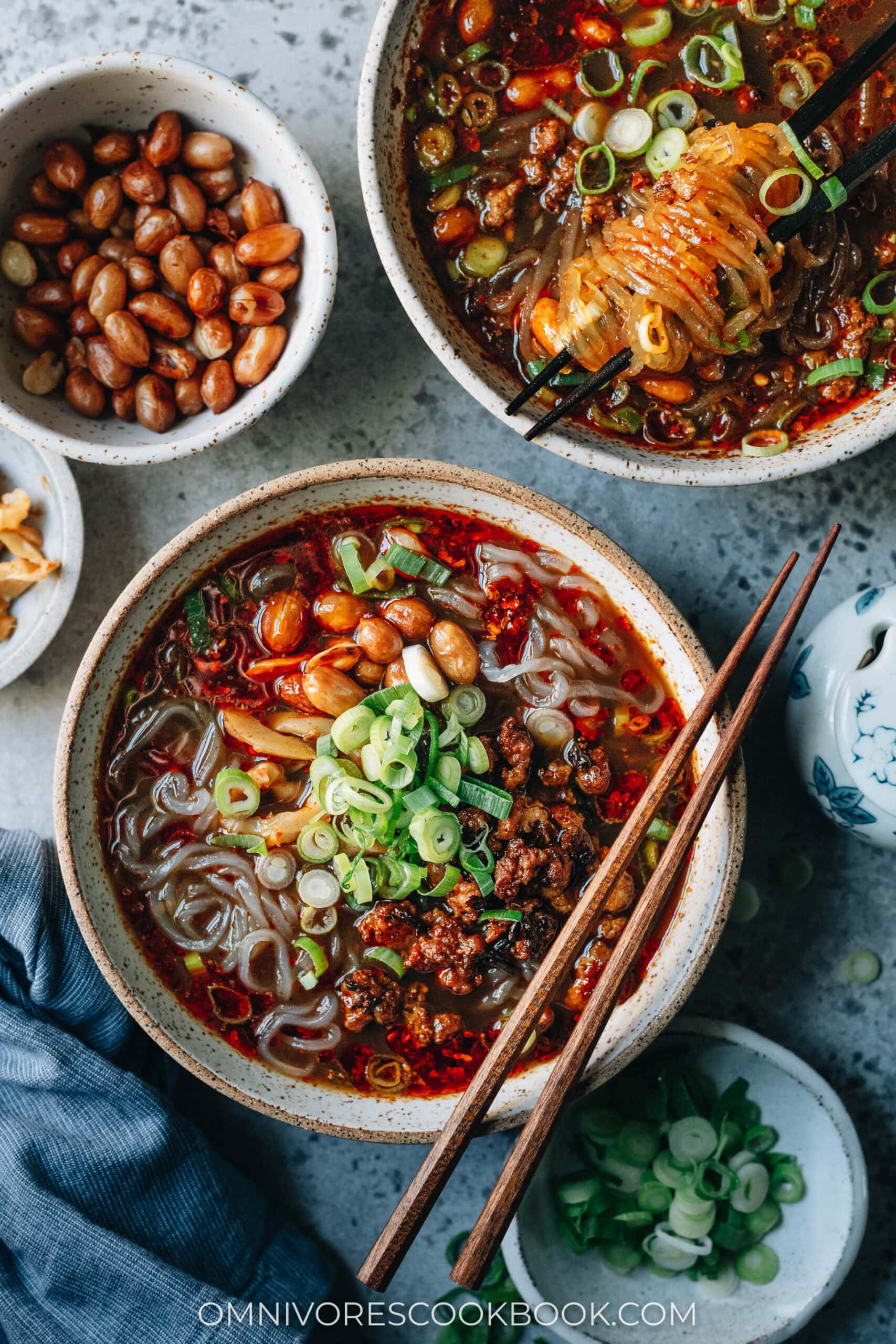
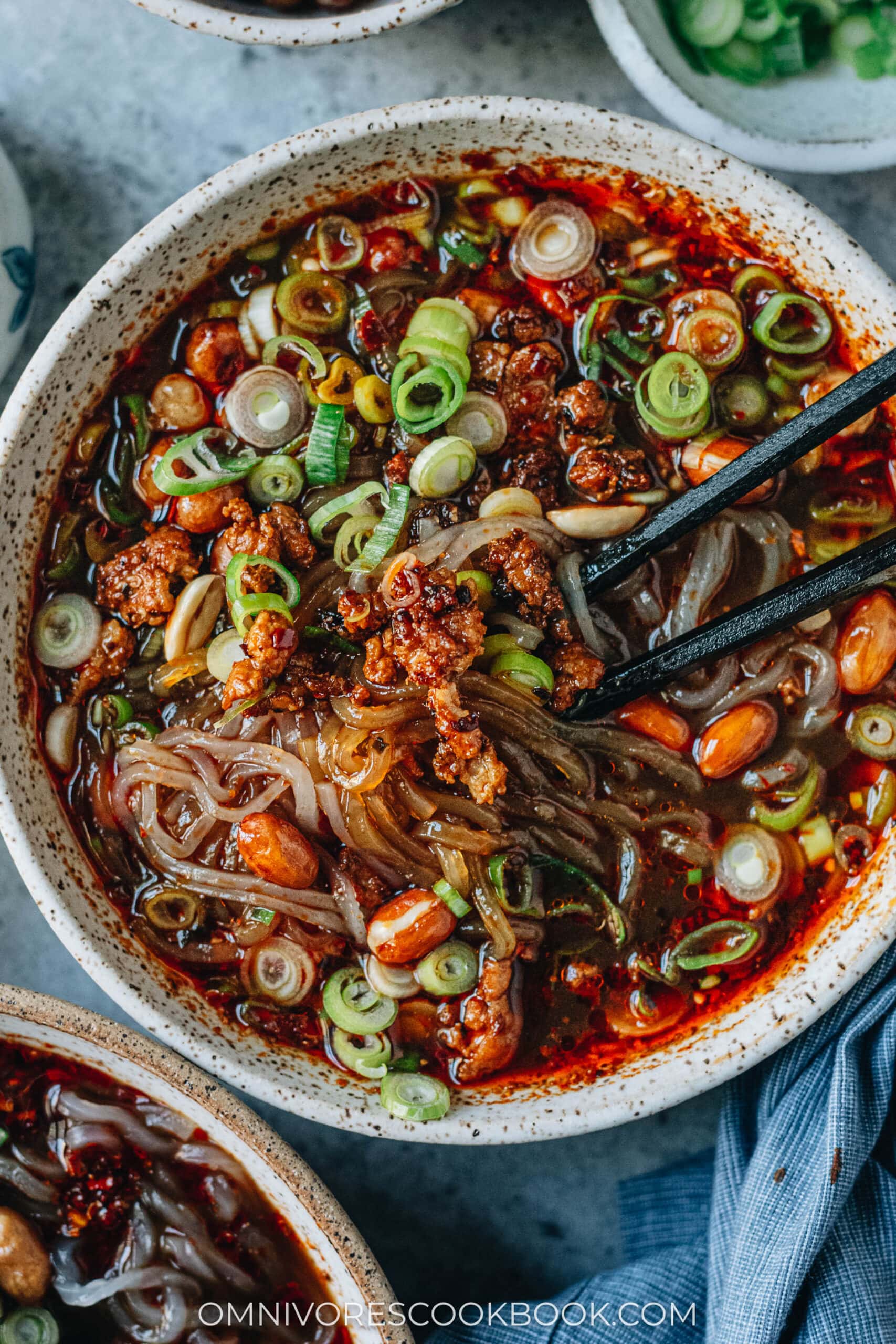
Other delicious Sichuan recipes
- Ma La Xiang Guo (Sichuan Mala Dry Pot, 麻辣香锅)
- Shui Zhu Yu (Sichuan Boiled Fish, 水煮鱼)
- Chinese Bang Bang Chicken (棒棒鸡)
- Fu Qi Fei Pian (Sichuan Sliced Beef in Chili Sauce, 夫妻肺片)
- Sichuan Eggplant Stir Fry (鱼香茄子)
- Sichuan Dry Fried Green Beans (干煸四季豆)
Chinese Cooking Made Easy
Are you new to this website? This free email series is a great place to start. I’ll walk you through a few of my most popular recipes and show you how and why they work. You’ll quickly start to cook better Chinese food in your own kitchen.
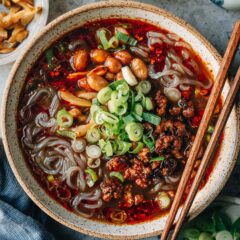
Suan La Fen (Hot and Sour Noodle Soup, 酸辣粉)
Ingredients
Meat topping (Optional)
- 1 teaspoon peanut oil
- 4 oz (125 g) ground pork
- 2 teaspoons Shaoxing wine (or dry sherry)
- 1 teaspoon dark soy sauce (use 2 teaspoons if not using Sui Mi Ya Cai)
- 2 teaspoons Sui Mi Ya Cai (Optional) (Footnote 1)
Broth (Divide the ingredients below, Footnote 2)
- 2 green onions , sliced
- 2 cloves garlic , grated
- 2 tablespoons homemade chili oil
- 2 tablespoons Chinkiang vinegar
- 2 tablespoons light soy sauce
- 1 teaspoon dark soy sauce
- 1/2 teaspoon sugar
- 1/8 teaspoon ground Sichuan peppercorns (Optional)
- 2 cups chicken broth (*Footnote 3)
Noodles
- 7 oz (200 g) fresh sweet potato noodles (or 4 oz./ 120 g dried sweet potato noodles)
Other toppings
- Roasted peanuts (*Footnote 4)
- Chopped cilantro (or green onions)
- Pickled mustard tube (or other Chinese pickles) (Optional)
Instructions
Prepare the meat toppings
- Heat oil in a medium skillet over medium-high heat until hot. Add the pork and spread it out. Let cook until the bottom is browned. Break apart the pork and flip to cook the other side until just cooked through.
- Pour in the Shaoxing wine, soy sauce and add the Sui Mi Ya Cai, if using. Stir and cook until the sauce is fully absorbed and mixed well. Transfer the pork to a plate and set aside.
Make the broth
- Divide all the ingredients evenly (except the chicken broth) and add them into two medium-sized bowls. Or add everything into one big bowl. (*Footnote 2)
- Add the chicken broth to a small saucepan and bring to a full boil over medium-high heat. When the broth comes to a boil, turn to low heat to keep the broth hot.
Prepare the noodles
- While heating up the broth, prepare the noodles according to the package instructions. Boil the noodles until al dente, then rinse a few times with cold tap water to stop cooking. Drain and set aside.
Assemble
- When everything is ready and you’re ready to serve, pour 1 cup of the broth into each bowl with all the broth ingredients.
- Divide and transfer the noodles into the bowls with the broth. Add the pork topping if using. Garnish with roasted peanuts, chopped cilantro or green onions, and pickled mustard tube. Serve hot.
Notes
- Sui Mi Ya Cai is chopped pickled mustard greens that have a fermented savory sweet taste. It’s a main ingredient in Dan Dan noodles. If you have some on hand, use it in this recipe to add flavor. It’s totally OK to skip it here.
- Traditionally, the noodle soup is prepared by adding each ingredient / seasoning to each bowl, then pouring the hot soup over, so each bowl is properly seasoned. If dividing the measurements is too confusing, hover your cursor over the serving number and adjust the slider to 1 serving. This way you get the proper amount of seasoning used in each bowl. If you prefer a large bowl of noodle soup, you can also make two servings in one big bowl.
- If you want to make this dish vegetarian / vegan, you can use boiling water, or boiling water with whatever bouillon you prefer. My personal favorites are Lee Kum Kee mushroom powder and Better than Bouillon Mushroom Base. Both are very savory and less sweet than most Western-style vegetable broths / bouillons.
- You can use packaged roasted peanuts directly. It helps a lot if you gently heat up the peanuts in a pan or in the oven so they crisp up a bit more. If using skin-on raw peanuts, soak the peanuts in water for 5 minutes, then drain and pat dry. Add the peanuts and 1 tablespoon peanut oil into a skillet. Heat over medium-low heat and stir constantly until the peanuts no longer make sparkling sounds and the skin has turned darker. Pour in 1 teaspoon of Shaoxing wine and mix a few times so the wine evaporates. Transfer the peanuts to a plate to drain and cool off.
Nutrition
Have a question or feedback? Add a Comment
Did you make this? I want to see! Tag @OmnivoresCookbook on Instagram, and rate the recipe below.

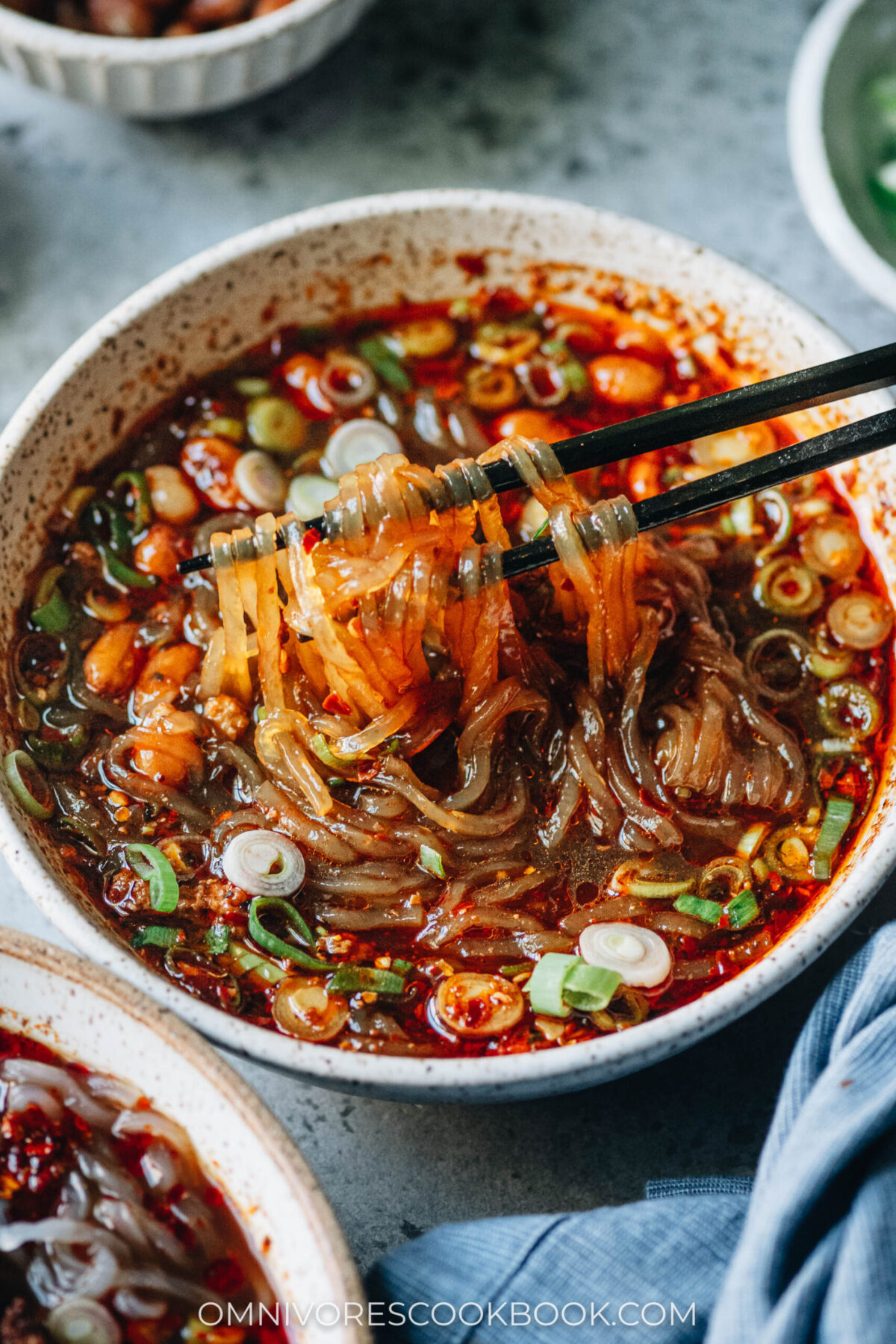
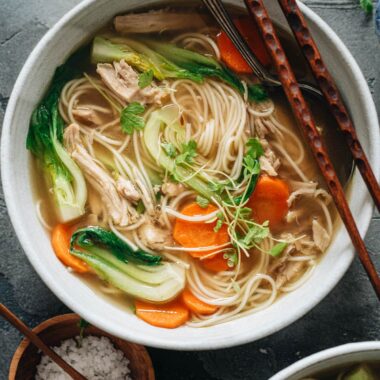
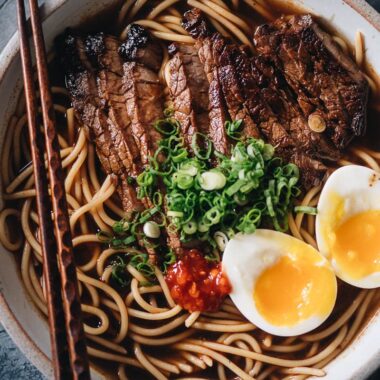
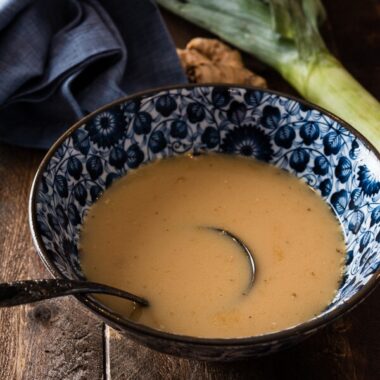
Julianna
I am looking forward to making this recipe! I have one question about this sweet potato noodles, though. Is there a particular reason why you do not cook the sweet potato noodles in the broth itself? Just wondering! Thank you so much for all of your inspiration, and have a great day!
stormy
Would love to hear of a low carb substitute for the noodles – I am diabetic and have to limit my carbs assiduously.
Maggie Zhu
I think you can try out shirataki noodles, sometimes it’s called calories zero noodles. It’s made from root of the konjac plant, which is high in fiber, contain no digestible carbs, and very low in calories. You can find different shapes and they work well in this noodle soup.
dawn
Loved this. My husband only had half a tbs of chili oil as he loves spice, but his tummy doesn’t. My eldest had seconds (. I forgot to give him the pork as was rushing, he came in and asked ” was that an accident?” I felt so bad. Gave him a second big serving.. I made sure to make more than enough. My boys eat big. There were other dishes. This was tonight’s winner
Sonja
I really love this soup although it burns my mouth every time i eat it
Maggie Zhu
It was popular in the earliy 90s in China, so I ate it often when I was in middle school. It burned my mouth so bad (because they make it even spicier in China), but we still ate it all the time 😛
So happy to hear you like this one and thanks for leaving a positive review!
Amanda
Delicious. I subbed kimchi for the Sui Mi Ya Cai. Fantastic !
Haydee B.
OMG! This came out so amazing. I CANNOT even! No regrets. Only change I made was using beef because I grabbed the wrong protein for the freezer – still super tasty! Everything else was followed to the T.
YY
Hi! I would love to try out this recipe, I’ve been craving for suan la fen these days. Could you please let me know if the amount of peppercorns added is 1/8 teaspoons, or 1/8 tablespoons? Thank you!
Maggie Zhu
It’s 1/8 teaspoon. Sorry for the confusion! Just updated the recipe. Happy cooking and hope yours turn out well 🙂
Jai Khalsa
This is an awesome recipe which resulted in a delicious soup. I was able to find the noodles pictured, but instead of homemade chili oil I used Mom’s Mala Sichuan Chili Sauce, which is similar to a chili crisp. Because I am trying not to regain the COVID 20 I was finally able to lose I did cut the noodles down by half, used ground turkey and turned a serving for 2 into 3. This resulted in each serving being 275 calories including the peanuts. The only ingredients I didn’t have were the Sui Mi Ya Cai and the pickled mustard tube which would’ve been a nice counterpoint. And regarding the recipe I am assuming where it said 1/8 ground Sichuan peppercorns it was 1/8 teaspoon which would make sense in the order of the ingredients. Thank you for the recipe. I look forward to trying others.
Jai Khalsa
I haven’t made the recipe yet. I had a question about the meat topping. You list Shaoxing wine as an ingredient, but don’t mention when to add it. I think probably when you add the soy sauce? Thank you.
Maggie Zhu
Sorry about it! Yes you should add it with the soy sauce. I just updated the recipe and now it’s correct.
Sherrie
This is a wonderful recipe. I made it today after taking your advice and making your Hot Chili Oil recipe. It is very easy to make and addictive!! I will make this again.
Dave
Made a vegetarian version of this for lunch and it was amazing. Quick and very tasty.
Maggie Zhu
So happy to hear you made this dish and it’s great that you enjoyed the vegetarian version! Thanks for leaving a positive review 🙂